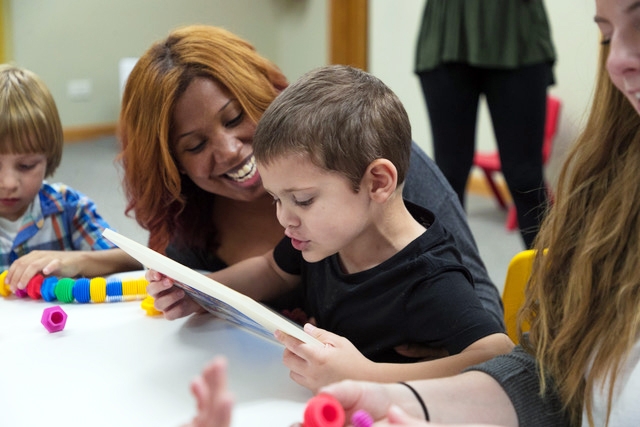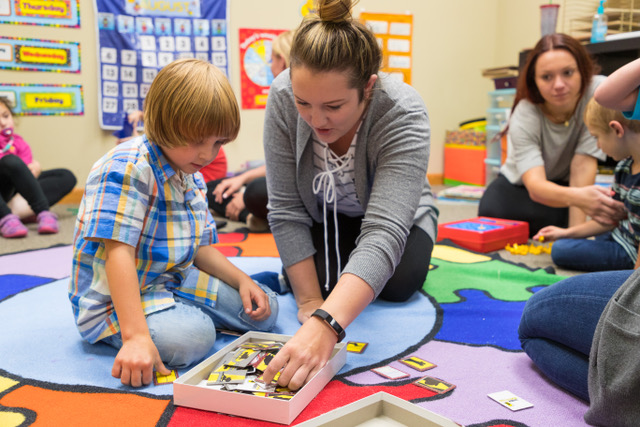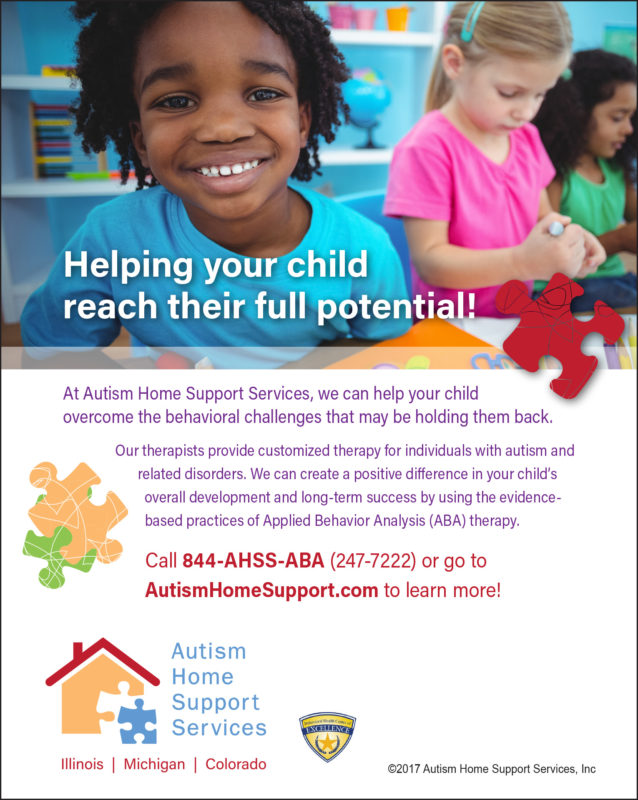Parents get excited about school starting in the fall and all the new adventures their children will have. They also know starting school can be a shock for first-time students. Getting up early and out the door, a day of sitting still, lining up and switching activities on a schedule isn’t easy for young kids.
Parents with children on the spectrum are just as excited for their kids to start preschool or kindergarten. Yet most recognize that the adjustment may be more difficult. School behaviors that are hard for many young children can be even more challenging for kids with autism – especially when all of those behaviors take place in a single day.

Classroom Readiness groups help children learn to focus on a task
A growing number of parents are preparing in advance with therapy designed specifically to help their children make an effective transition to school and build the foundation for future social and academic success. Known as “classroom-readiness groups” or “early learners groups,” these use Applied Behavior Analysis (ABA) to help young children learn the behaviors they’ll need to adjust to school and be ready to learn.
ABA has been proven to be the most effective method for teaching age-appropriate skills to children with ASD (Granpeesheh, Tarbox, & Dixon, 2009). The only autism treatment that has been endorsed by the U.S. Surgeon General (1998) and the American Association of Pediatrics, ABA uses positive reinforcement, teaching in small steps and repeated practice to help children develop behavior, language, social skills and other aptitudes (Fani-Panagiota, 2015).
School Behaviors up Close
The tendency to assume children do things at certain ages – such as starting kindergarten at age 5 – can lead us to overlook the complex behaviors associated with taking those steps.
Going to school requires a host of skills (Pruett, 2017). A child must be able to separate from her parents, follow directions, sit still long enough to focus on a task, and start and stop activities, all while being in close proximity to peers and teachers.
Each of these involves a number of discrete behaviors. For example, something as simple as standing in line consists of component skills such as following directions, referencing/imitating peer behavior, being aware of personal space and body awareness.
Parents whose children are on the spectrum often hope the school will teach these skills. Preschool and kindergarten undoubtedly focus on classroom behaviors, but often not enough for children with ASD. Further, general classroom teachers usually don’t have time to provide the guidance and repeated practice that the one or two children in class who are on the spectrum need to absorb school behaviors.
While not specifically analyzing “school readiness” behaviors, Eldevik and colleagues (2011) found that children receiving ABA-based intervention in a preschool setting made significantly more gains in both intellectual and adaptive functioning skills when compared to children receiving the standard, eclectic approach in a similar setting. Classroom-readiness provides specialized guidance and 20 to 40 hours of therapy each week to teach kids with autism age-appropriate skills they’ll need to succeed in school.

Individual work in a Classroom Readiness/Early Learners’ group at the AHSS Autism Center in Arlington Heights, Illinois
Classroom Readiness up Close
Classroom-readiness groups work with children from ages 3 to 6, when kids typically transition out of state-sponsored early intervention and start preschool or kindergarten.
These structured small groups combine individual and group exercises. ABA therapists work one-on-one with each child, implementing a treatment plan that is customized for his or her unique abilities and supervised by a Board Certified Behavior Analyst.
Throughout the day, the children gather to practice in a classroom-like environment and generalize their skills to new situations. Four to six kids will work on typical school activities such as lining up, sitting for show and tell, eating snack and following directions. The group also helps improve social skills such as taking turns, playing together, working in teams and sharing.
Another valuable feature of classroom-readiness therapy is the opportunity to define a child’s most effective learning style. Does she learn behaviors most easily when she works one-on-one with an adult or in a small group setting? This information can be extremely helpful to parents, teachers and the team that is developing a child’s Individual Education Plan.
To be clear, classroom readiness groups emphasize behavior, not knowledge. They don’t directly teach academic subjects. The primary goal of classroom-readiness therapy is helping children become familiar with the behaviors they’ll need to go to school and be ready to learn (Bene, Banda and Brown, 2014).
The Team Approach
Many parents find that it’s helpful to continue classroom-readiness therapy after their child starts school. By staying in touch with the child’s teachers and Individual Educational Plan team, an ABA therapist can incorporate the IEP’s goals into classroom-readiness efforts. Ongoing individual and group therapy group can also sharpen the child’s evolving skills and behaviors as needed.
Starting school opens new worlds for children. Children with autism often need extra help to make the most of those opportunities. Classroom-readiness groups can be one answer, providing intensive, focused therapy to help children on the spectrum learn school behaviors and build a foundation for social and academic success.
Laura Bonfante (lbonfante@autismhomesupport.com) is a Board Certified Behavior Analyst for Autism Home Support Services and manages AHSS’ Autism Center in Arlington Heights, Illinois. AHSS is the Midwest’s largest provider of in-home ABA therapy and offers classroom readiness groups at a growing number of autism centers across the United States. For more information, see autismhomesupport.com or call (844) 247-7222.
References
Bene, K., Banda, D. R., & Brown, D. (2014). A meta-analysis of peer-mediated instructional arrangements and autism. Review Journal of Autism and Developmental Disorders, 1, 135–142.
Eldevik, S., Hastings, R. P., Jahr, E., & Hughes, J. C. (2012). Outcomes of behavioral intervention for children with autism in mainstream pre-school settings. Journal of Autism and Developmental Disorders, 42, 210-220.
Fani-Panagiota, R. (2015). Teaching strategies for children with autism. Journal of Physical Education and Sport, 1, 148-159.
Granpeesheh, D., Tarbox, J., & Dixon, D. R. (2009). Applied behavior analytic interventions for children with autism: A description and review of treatment research. Annals of Clinical Psychiatry, 21(3), 162-73.
Mental Health: A Report of the Surgeon General (1998). Washington, DC: U.S. Department of Health & Human Services, Office of the Surgeon General
Pruett, K. D. (2017). Life skills to have before starting kindergarten: Emphasis on life skills v. work skills. Psychology Today. Retrieved from https://www.psychologytoday.com/blog/once-upon-child/201702/life-skills-have-starting-kindergarten





